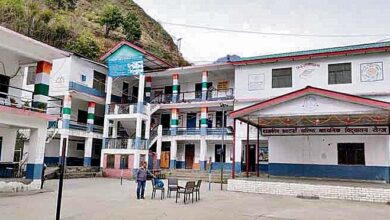The Supreme Court rejects the notion of physically tallying VVPAT slips
The Supreme Court on Tuesday essentially rejected calls to return to the manual voting method or to count all VVPAT slips, stating that such a move was impractical in India because of the country’s enormous voter turnout and its inherent issues with physical voting.

We are in our sixties. What used to occur before, when ballot papers were utilized, has been seen. In response to attorney Prashant Bhushan’s demand that the Election Commission return to the method of manual vote counting on behalf of the petitioner Association for Democratic Reforms, a bench of Justices Sanjiv Khanna and Dipankar Datta said, “You may have, but we have not forgotten.”
“Paper ballots are an option once again. Giving VVPAT slips to the voters in question is an additional option. If not, the slips tumble into the device. The voter may thereafter place the slip into the voting box,” Bhushan said, calling for either a 100% count of VVPAT slips or a physical count of the ballots.
Voters may check whether their votes were cast accurately by using the independent vote verification technology known as VVPAT. The voter may examine the paper slip that is generated. It is stored under an airtight cover that may be opened in the event of a disagreement. Rather than using VVPAT paper slips to verify five randomly chosen EVMs per assembly segment, as is now the case, the petitioners have asked 100% counting of the slips.
The hearing was postponed by the Bench to April 18, one day before the commencement of the 2024 Lok Sabha election’s first round of voting.
Judge Datta retorted, “What’s Germany’s population? “as Bhushan contended that the majority of European nations that had used electronic voting machines had gone back to using paper ballots, citing Germany as an example. Let’s avoid making comparisons with Germany. The population of West Bengal, where I live, exceeds that of Germany. We must place some confidence and trust in someone. They are responsible, of course. But do not attempt to overthrow the system in this manner. Don’t use instances like that. After Bhushan said that there were over six crore people living in Germany, Justice Datta informed him, “European examples don’t work here.”
Justice Khanna said, “The total number of voters in India who are registered is ninety-seven crore.”
The Election Commission was also asked many questions by the Bench on the operation of the EVMs. “Accurate findings will be provided by machines operating regularly without human interference. Yes, human interaction or unauthorized modifications made by someone when they are in close proximity to the equipment or program cause an issue. You are welcome to provide us with any suggestions you may have to stop this,” the bench said. The Bench said, “This is serious,” pointing out that there was no provision for a severe penalty for tampering with EVMs. The dread of punishment ought to exist.
Senior supporters Gopal Sankaranarayan, Sanjay Hegde, H Ahmadi, and others backed Bhushan, saying they had no ill intent and just wanted the system to be one that made people feel confident in it.
The Bench said, “Let us not believe in private polls,” rejecting several private surveys that Bhushan had used to imply that people didn’t trust EVMs. Let’s base our decision on data. The issue with data is that it has to be real; it can’t be based on conjecture but on actual performance. The Election Commission will provide the information to us.






